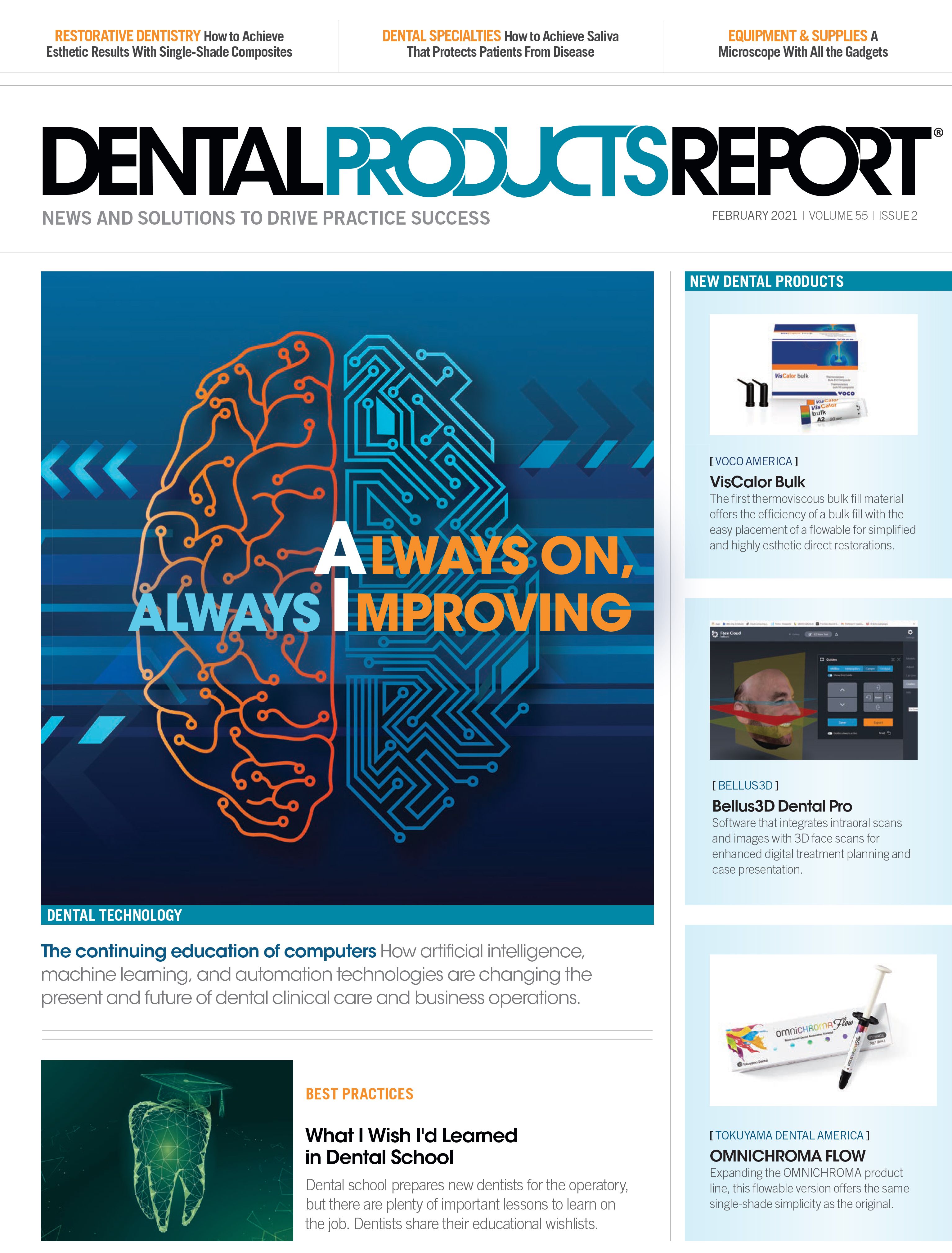Alan Mead, DDS, didn’t simply add a microscope to his practice in Saginaw, Michigan; he built his practice around the use of microscopes almost from the get-go. He purchased a practice in 1998, now Mead Family Dental, and moved the office to a new location in 2013.
“So I kind of built this new office around the idea of having microscopes in the operatory,” Dr Mead says.
Although he has used microscopes in his practice for years, it wasn’t until about 2 years ago that Enova’s Zumax caught his eye.
“Zumax had always been a brand that I was aware of, but they didn’t have an excellent sales presence in the United States,” he explains. “The scope that I’m using right now, the [OMS]2380, they had at the [2019] Chicago Midwinter. And I don’t know if it was a prototype or not, but I was drawn to it. I went back to that booth at the Midwinter Meeting multiple times.”
Most microscopes follow a certain design, but the Zumax’s built-in features really stood out, he adds. However, it wasn’t until Enova became the US distributor of Zumax at the end of 2019 that Dr Mead was able to add one to his practice.
Zumax
Zumax microscopes have been developed specifically for the dental industry. Designed for single-hand operation, the Zumax features an electromagnetic clutch that balances the arm. Its continuous zoom technology allows for smooth visualization. With integrated high-definition video recording, the Zumax microscope can be connected to an iPhone for viewing and easy documentation with an attachment add-on. Videos can then be edited and shared.
Enova
651-236-8857 | goenova.com
“I knew that in my new location, I wanted to have microscopes in the office,” he says. “Now, at this point, the Zumax wasn’t available; I had used different brands. Then I actually took [those brands] out of the operatory to put the Zumax in because, feature-wise, there aren’t any other scopes that offer what this new microscope offers.”
One of the main reasons Dr Mead wanted microscopes in his practice was their ability to show a live video feed on a screen, allowing patients to see exactly what he sees. This feature has increased patient education and treatment execution, he says.
“One of the reasons I built the office around [microscopes] was that I was convinced that if I had a monitor…connected to a camera on my microscope in each operatory, I could then show patients what I was seeing live,” Dr Mead explains.
“We saw an increase in production and treatment plans, [using] it,” he continues. “In other words, [there were fewer] questions from patients because I was able to explain it, not only with words but with images. This is like an intraoral camera on steroids. The image is way clearer. But more than that, it’s a live video of me in the mouth…. And I can go back with that video and show them again. It’s next-level,” Dr Mead says.
Microscopes offer dentists views of the oral cavity that they have likely never seen before, he notes. This makes dentistry better because it becomes an immersive experience.
“It’s like looking in a fish tank versus scuba diving. It’s shockingly different to be able to see that up close in a microscope,” Dr Mead says.
One of the key benefits of the Zumax is its integrated camera. Some microscopes require at least a basic knowledge of cameras to get them to function with a microscope, something that Dr Mead says was tricky for him. But the Zumax’s built-in camera has eliminated that problem.
“There are a lot of reasons to look at the Zumax, but the built-in camera, to me, is probably the most important reason. Your precision gets better because you can go with a very high magnification. My favorite thing about microscopes is that documentation of what you’re seeing or what you’re doing is made so easy. The Zumax takes that 1 level further by having a button to push on the scope.”
Another feature of the microscope that really impressed him was the continuous zoom function, which allows for a more seamless visualization of the oral cavity. Many microscopes have stepped magnification, which limits what clinicians are able to see, according to Dr Mead.
“You can fine-tune the level of magnification that you want, which is really handy. It’s kind of funny, I used stepped magnification all the time. Now, I only have 1 microscope that has zoom,” he says. “But that is a feature that I didn’t know I wanted until I had it. It has a smoother movement than any other scope I’ve used.”


